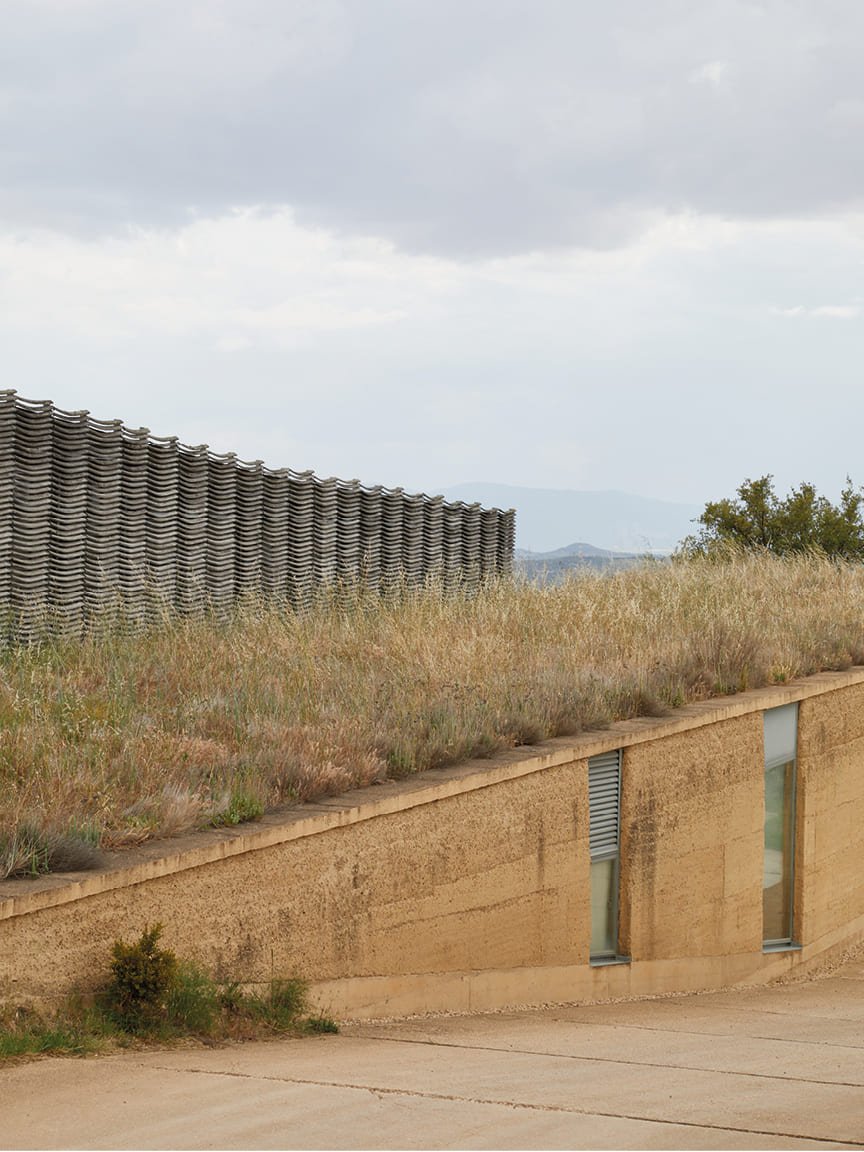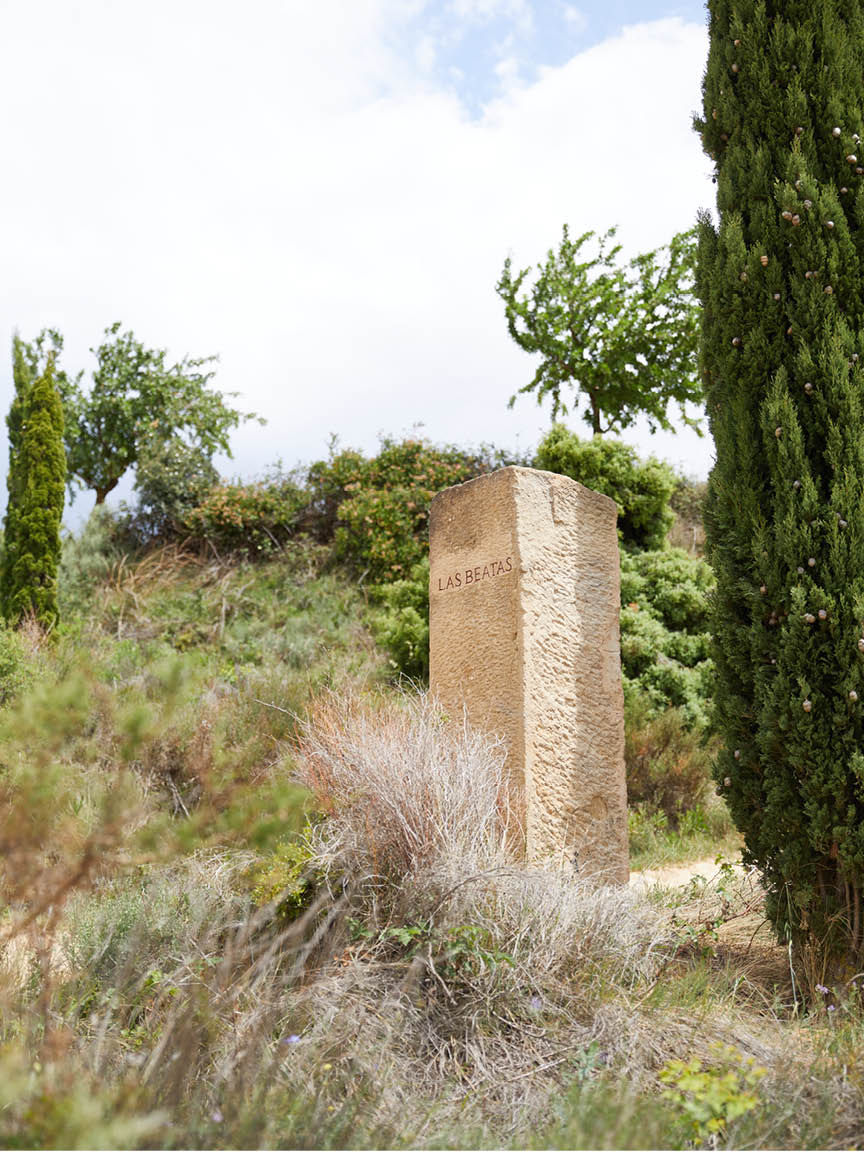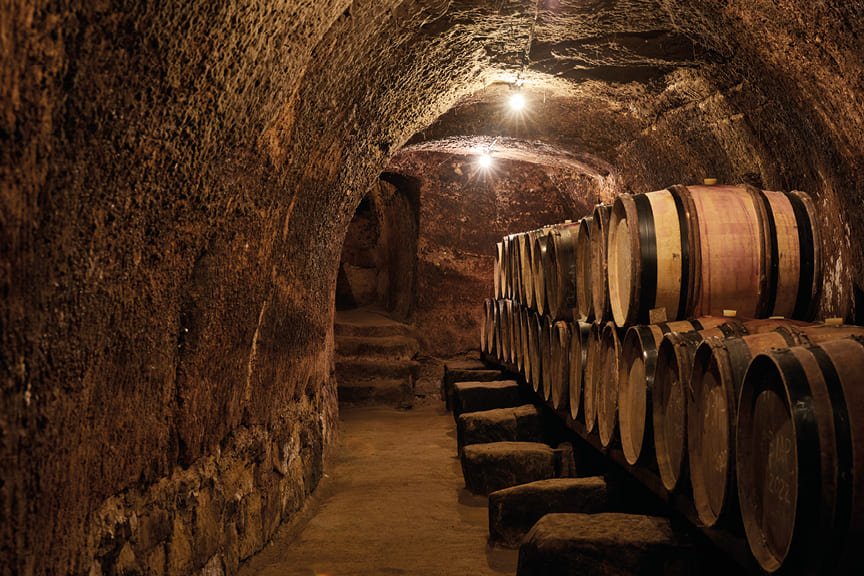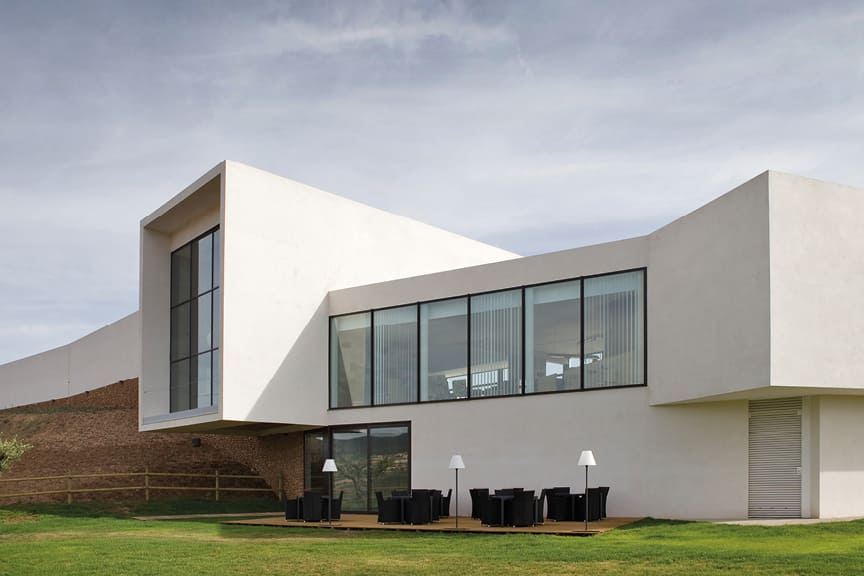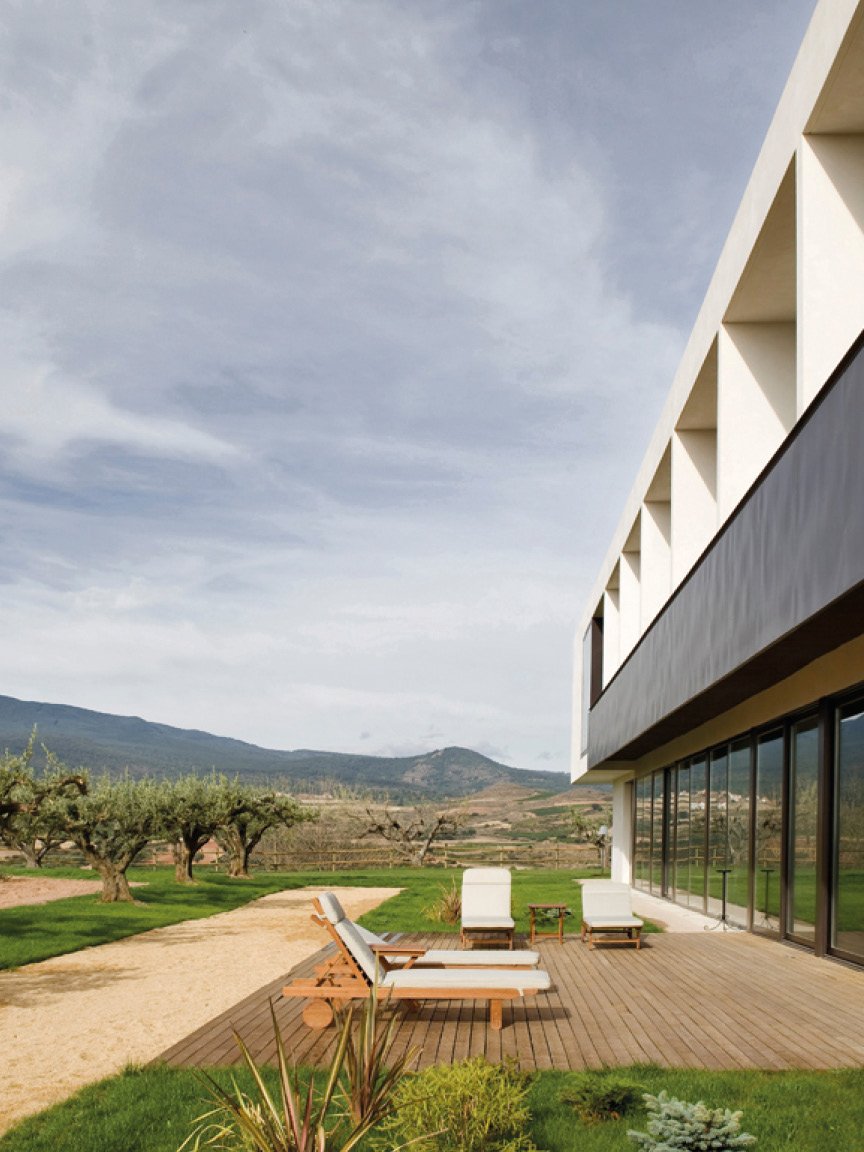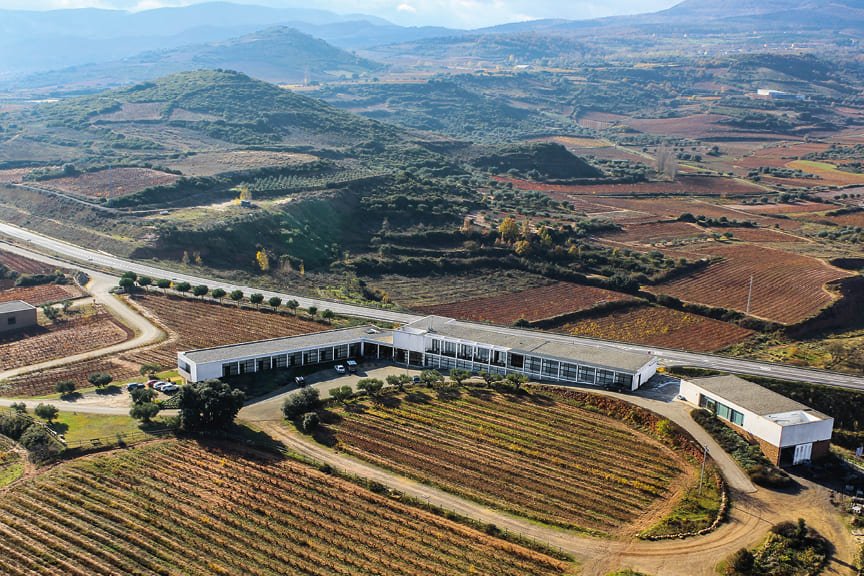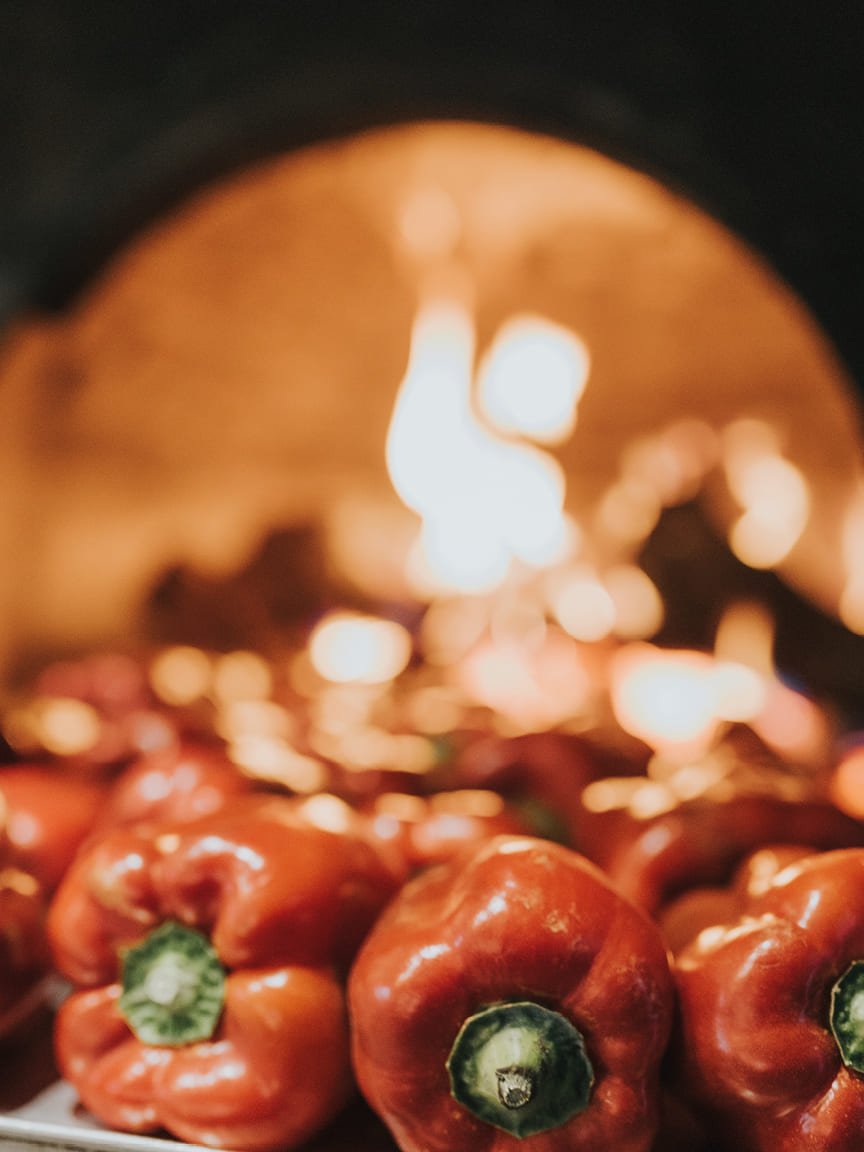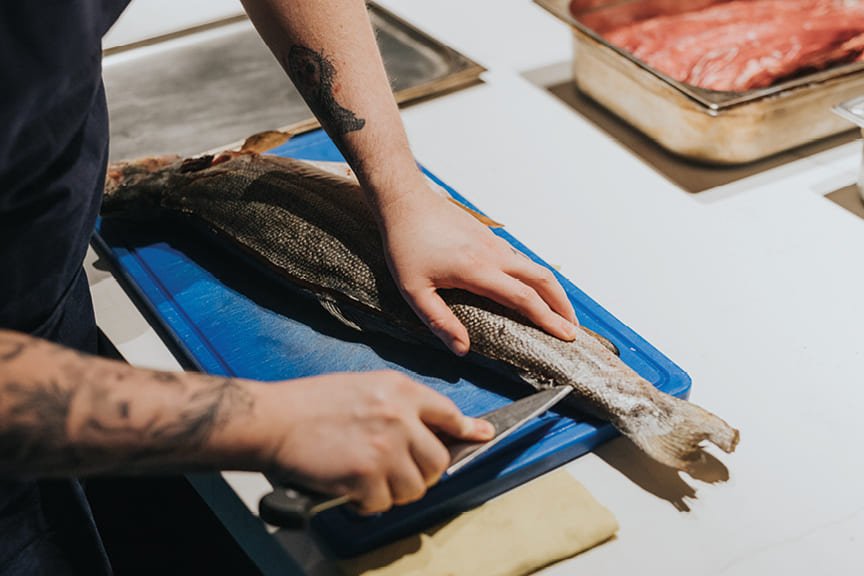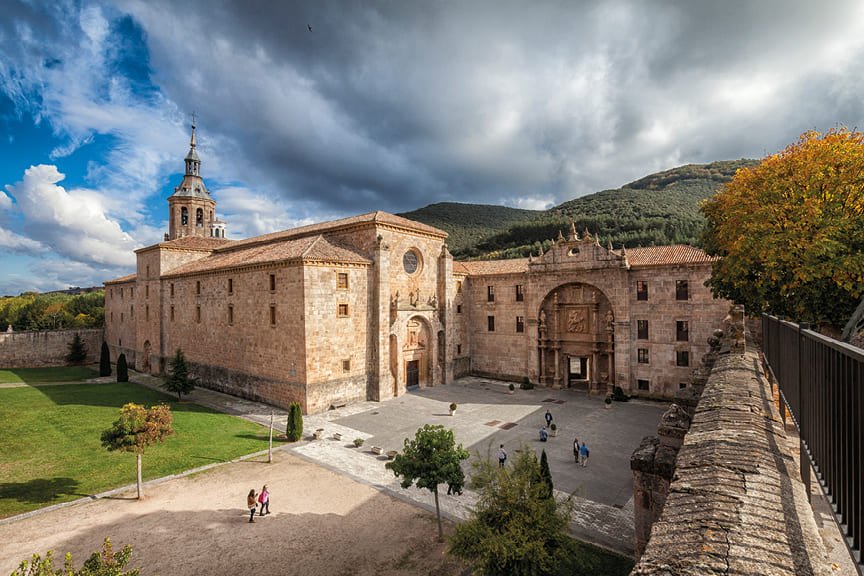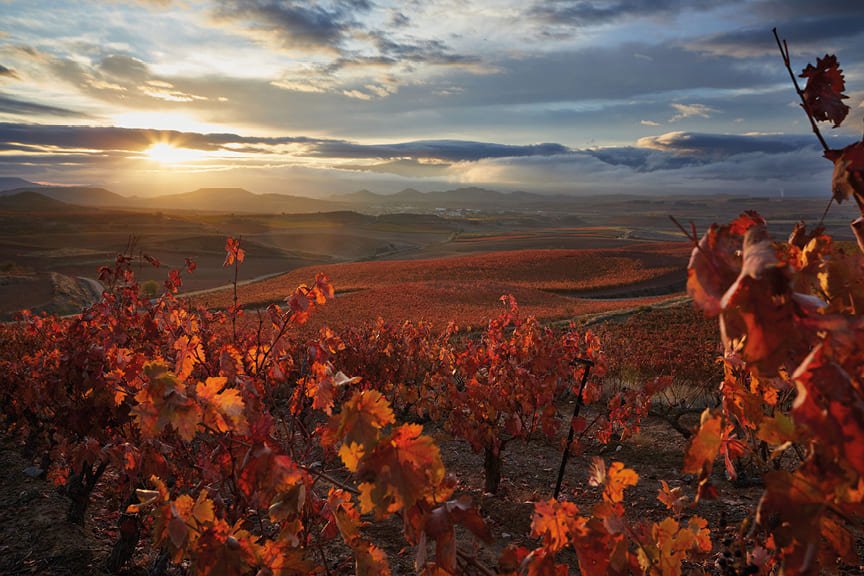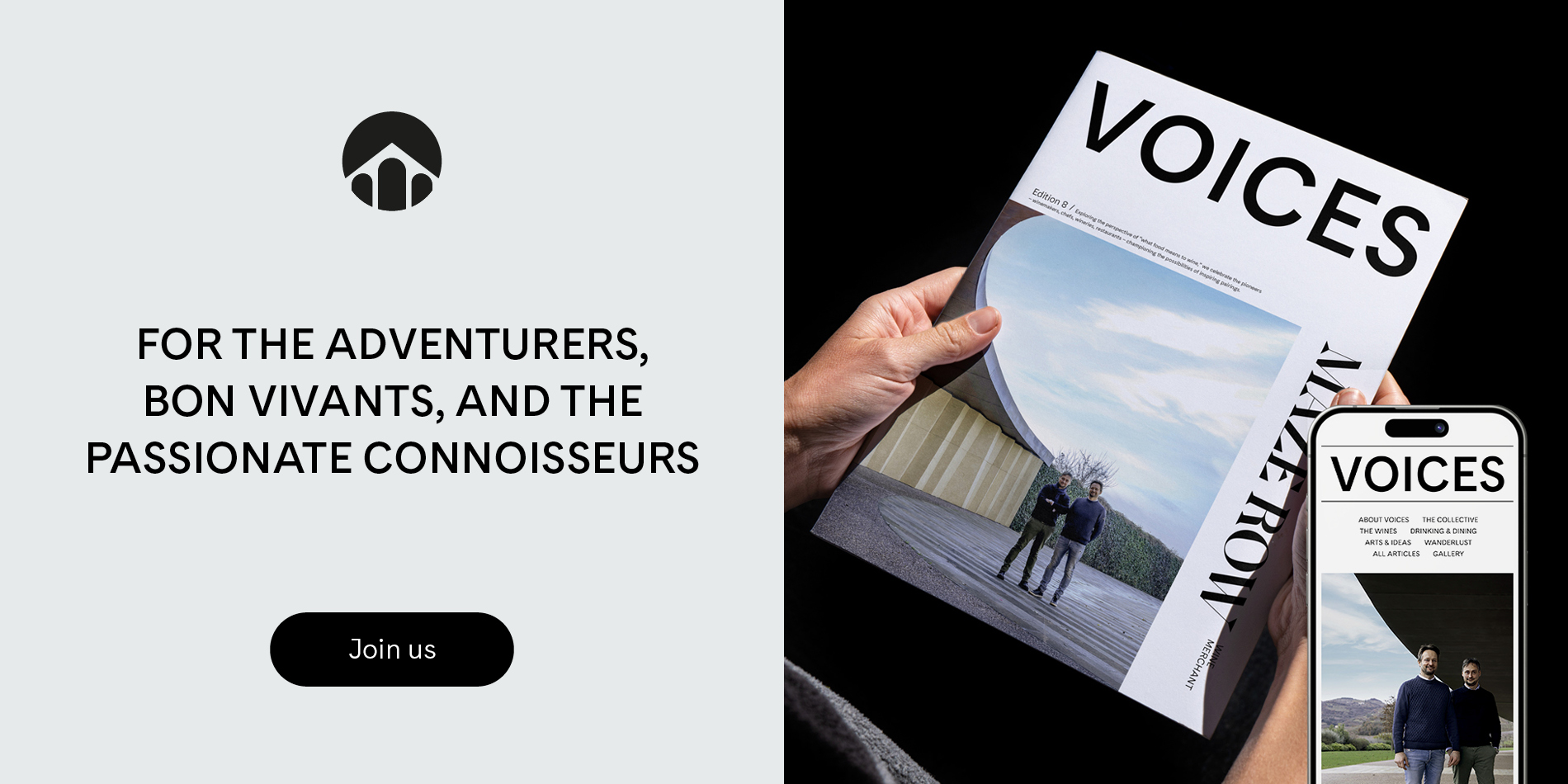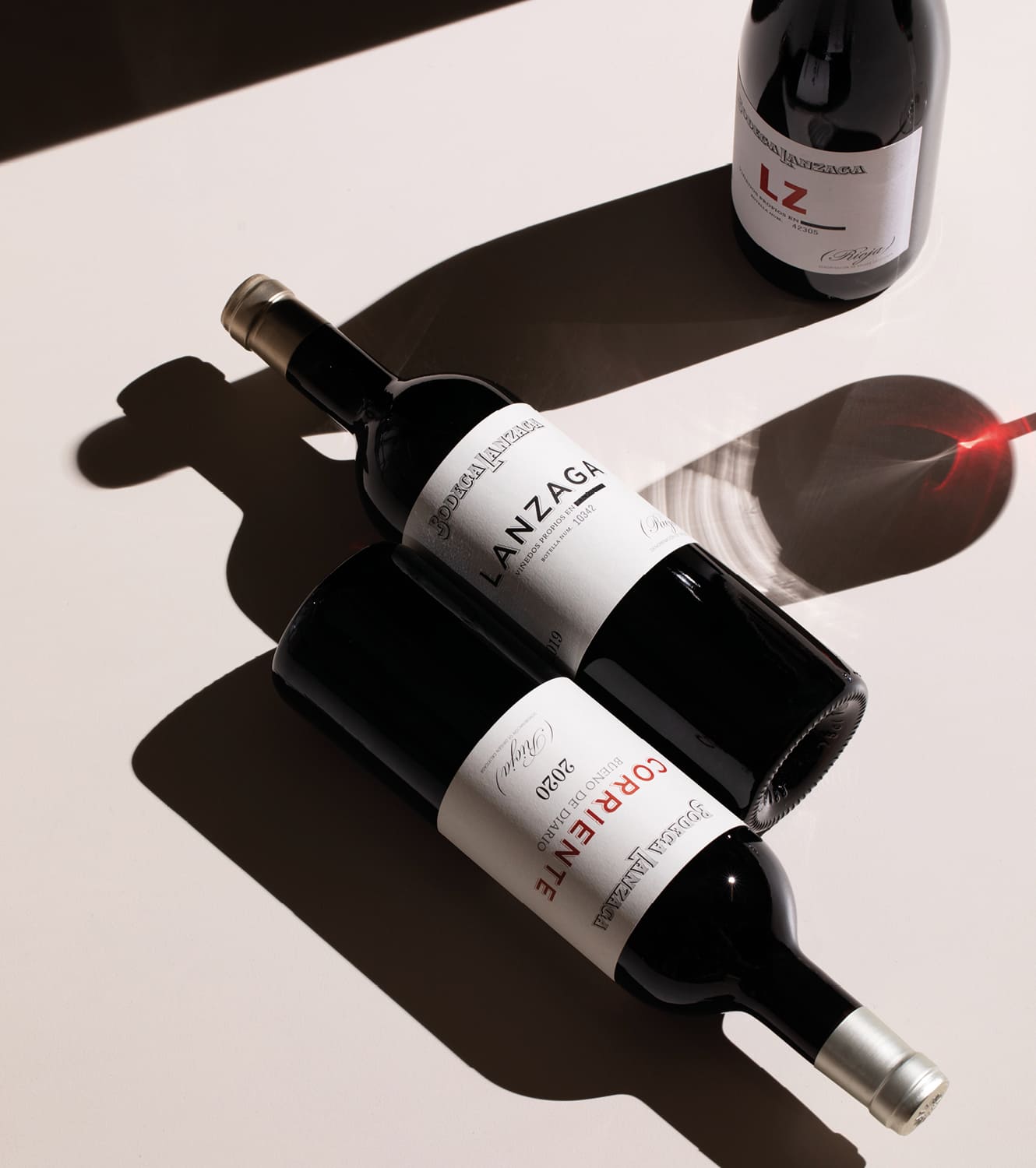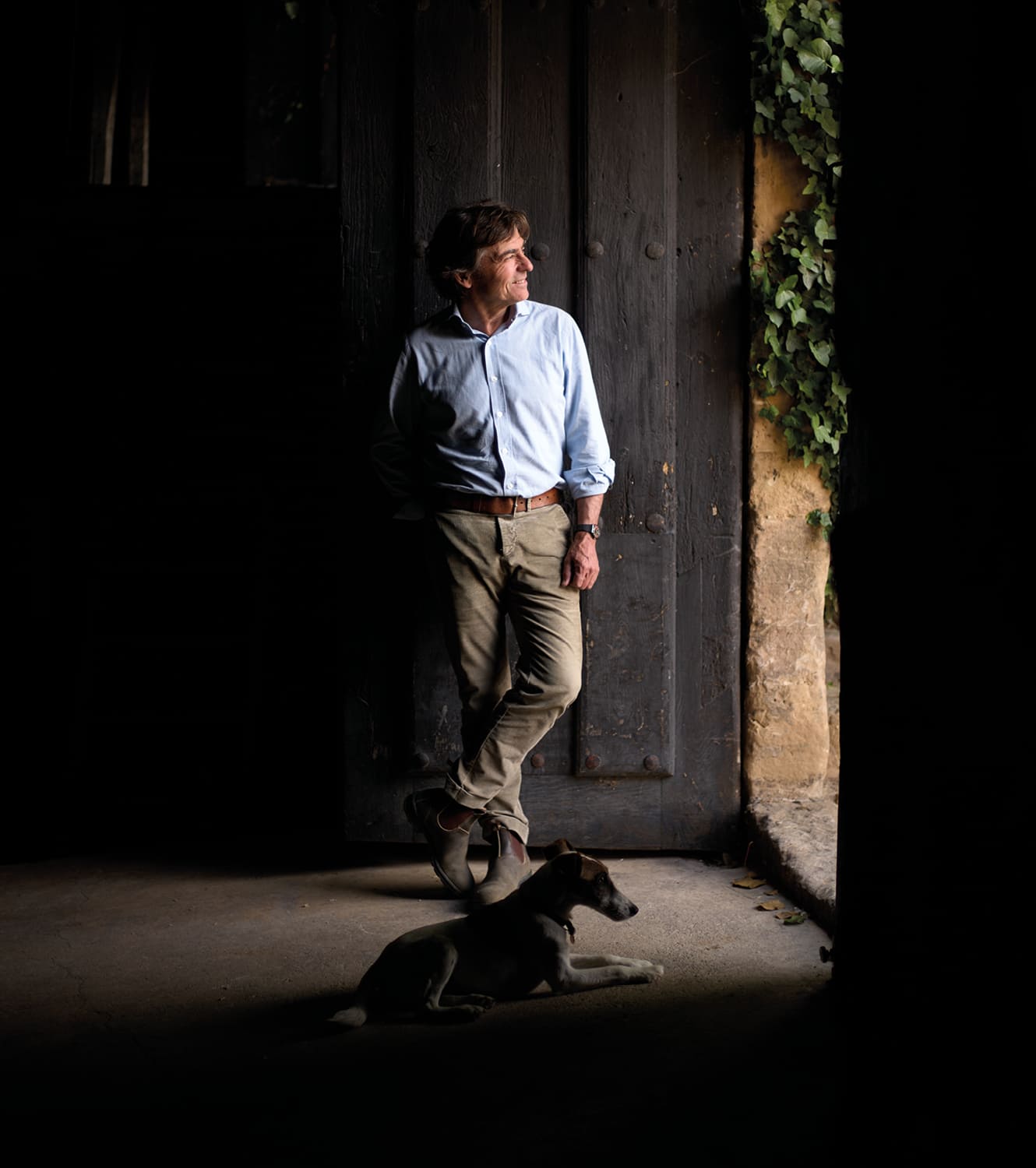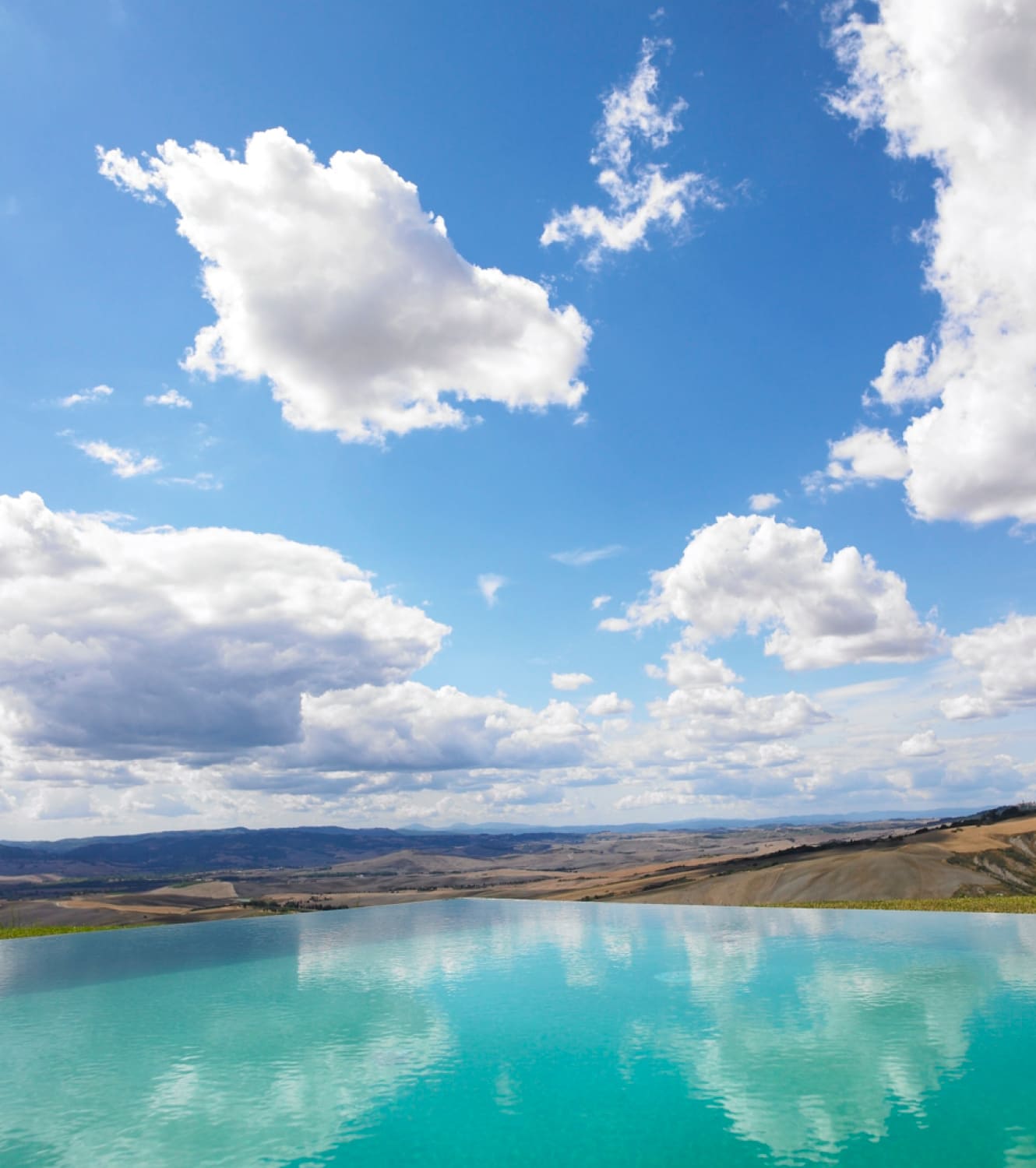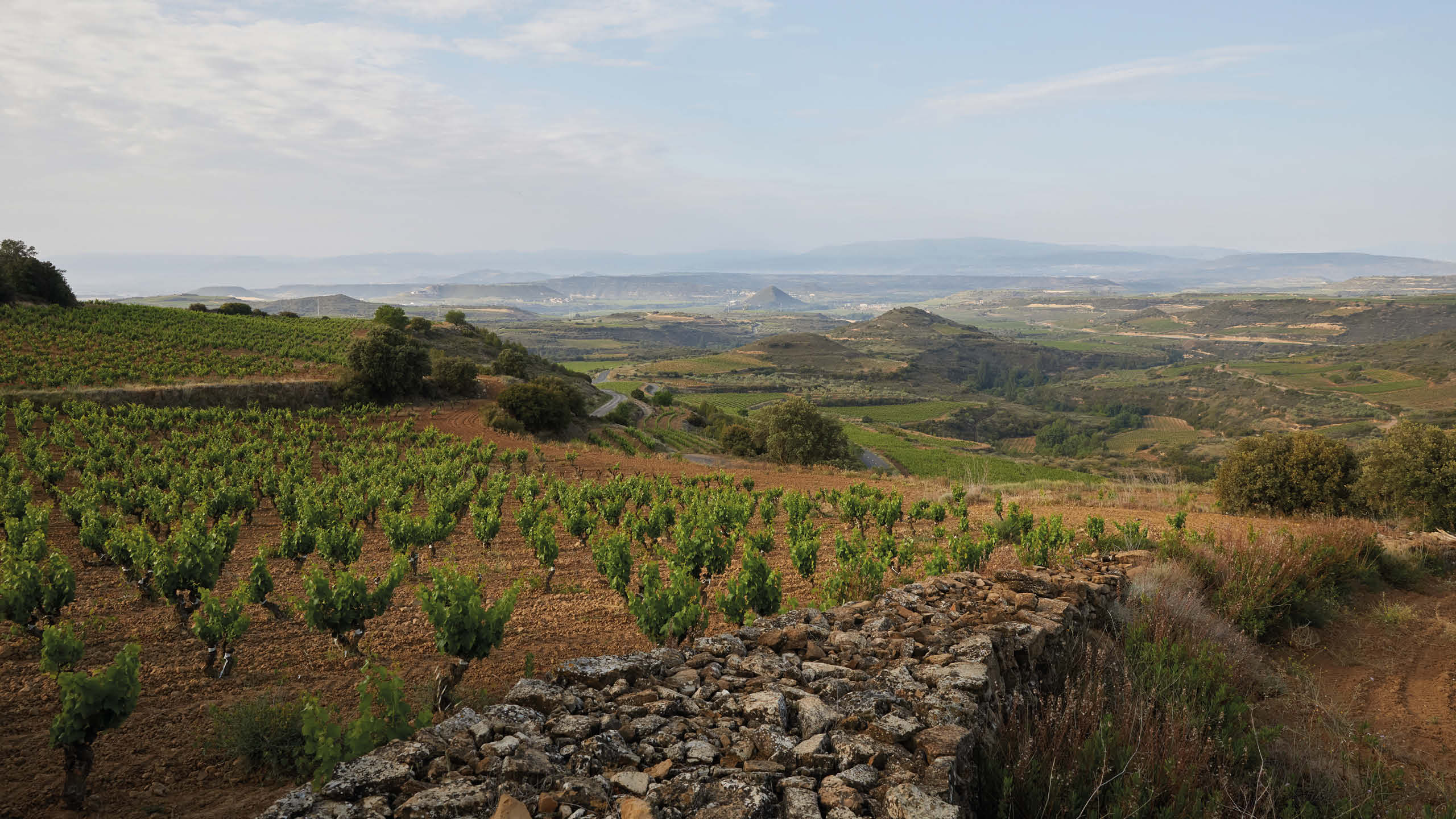
Wine Trails Spain: La Rioja
Few tourists visit the Spanish wine region, yet it makes for a unique holiday location, says Mike MacEacheran, who follows the Ebro Valley to find peace among the vineyards and wineries of historic La Rioja
One of the many good things about being in northern Spain is the freedom to eat and drink what’s plentifully produced by the locals – it’s almost an obligation. The Atlantic coast of Bilbao and San Sebastian rewards with merry cafés and bars offering cocktail stick-stabbed snacks, like stuffed piquillo peppers, skewered anchovies and dry-cured jamón croquetas. Happily, there are plenty of drinks to partner with these morsel-
sized pintxos.
The beer is great, if not as traditional as the hard cider, which has been produced for centuries by Sagardotegia warehouses that fan out from Astigarraga. Better than all of that though, is the wine of the seemingly unstoppable La Rioja region – here more than 500 vineyards offer an education into locally blended grape varieties and you feel like you’ve arrived at the center of a whole atlas of wine.
South of Bilbao, the wineries and bodegas are mostly scattered along the Ebro Valley, a 150km-wide area often called “the land of a thousand wines.” Winemaking is a labor of love here, as well as in the vineyard-laden high grounds in the shadow of the Cantabrian mountains, and there are three distinctive sub-regions, all of which can really only be conquered by car: upriver towards Haro in Rioja Alta, in the fields of Rioja Alavesa, or down to Calahorra in warmer, drier Rioja Oriental.
If traveling from the coast, start your trip near the area’s wine capital Haro, where a cluster of bodegas begin to tell the region’s viticulture story. To the west of the Ebro River, the Rioja Alta’s terroir is deep red, iron-rich clay and this proudly Spanish swathe produces wines with high acidity and cellars crammed with oak barrels. Close by is Logroño, La Rioja’s largest city and a place so lovely you’ll need to find plenty of excuses to leave it behind in the rearview.
Even so, it’s onwards east into the Basque Country to Rioja Alavesa, motoring across the Ebro as a patchwork of bodegas and vineyards roll into view. Of the wineries here, the most interesting are tub-thumping advocates for Spanish wine’s potential, not only the well-told story of its classic reds. There are lavish restaurants and modern tasting rooms, with many clustered around Laguardia, a fortified hilltop town with eye candy turrets, roofs and honey-colored houses. A rookie error is to rush right through.
You’re not yet done. Beyond the terrific town of Briones, you’re deep into Rioja Oriental, the new kid of La Rioja’s three sub-regions and where the talk is of little-known labels with a big future. There is time for more vineyards and barrel tastings. More time for cellars and wine caves. There will also be plenty of empty bottles and stacked pintxos plates and, perhaps, the lingering regret that you should have stayed longer.
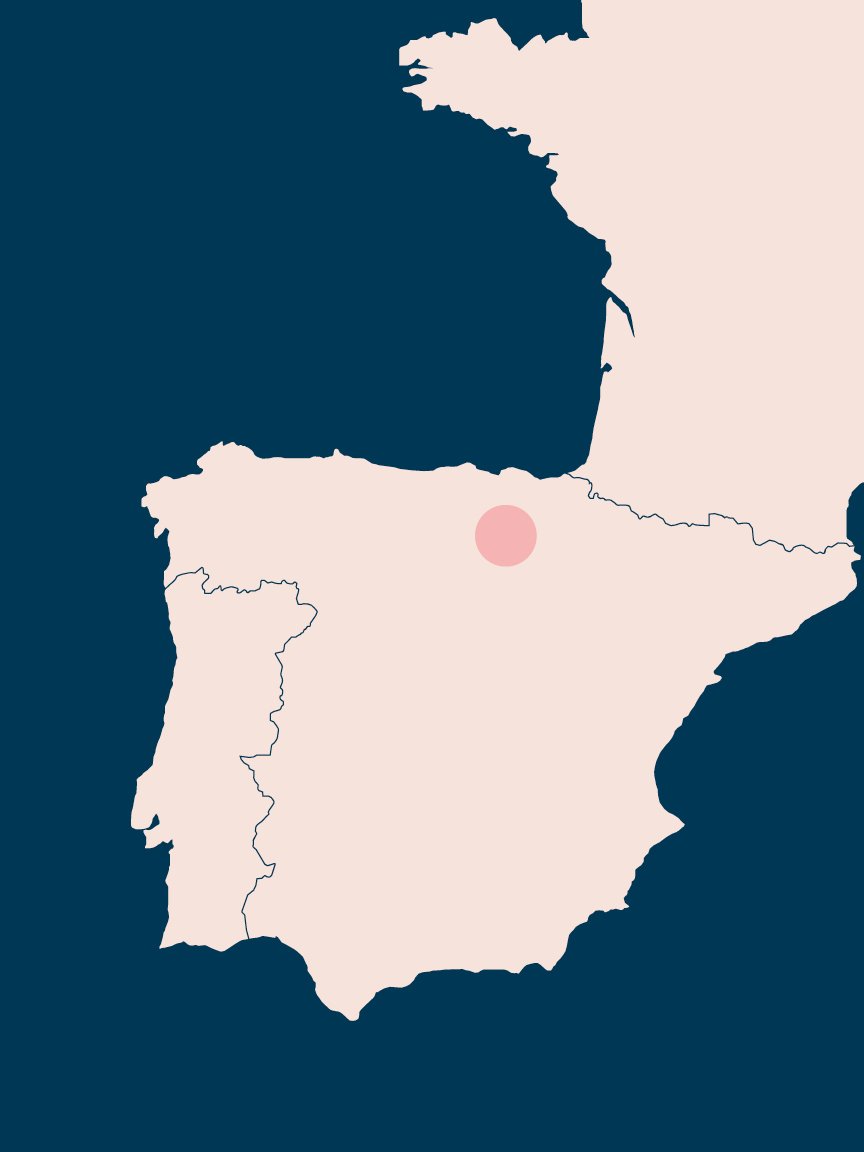

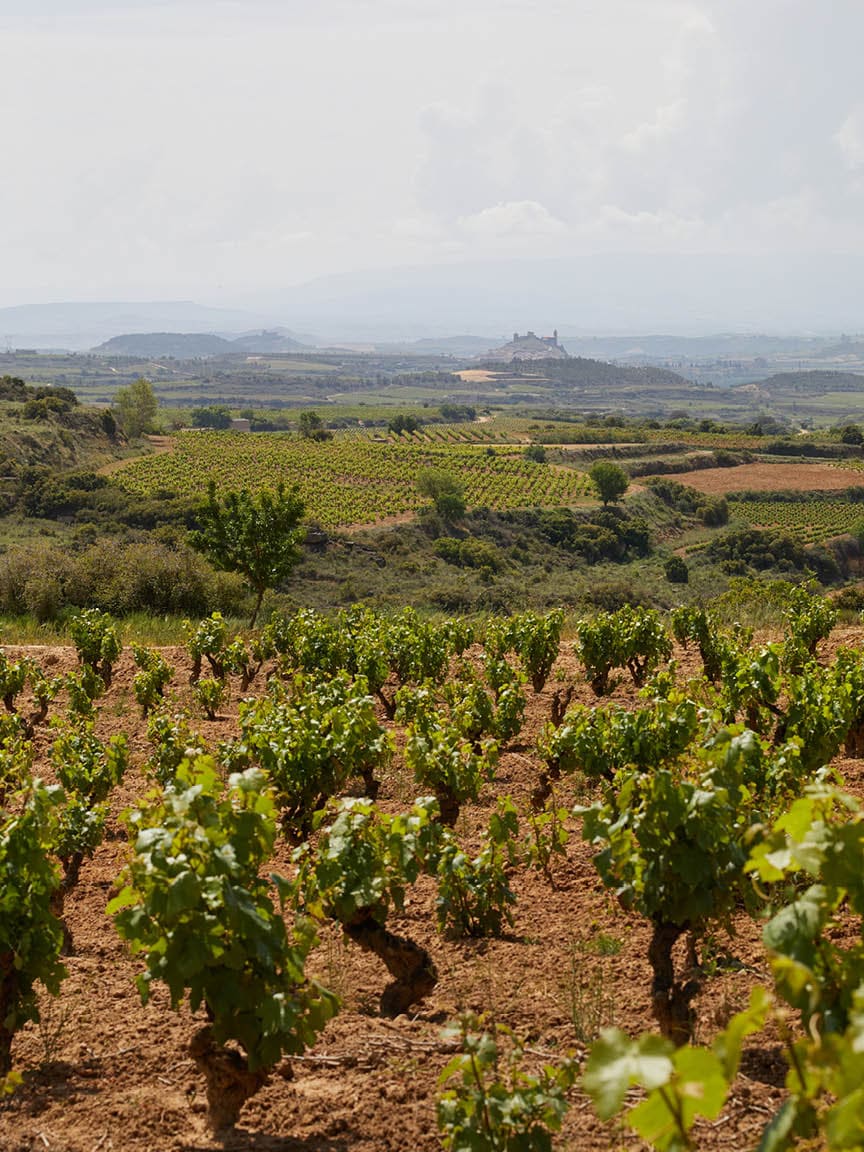
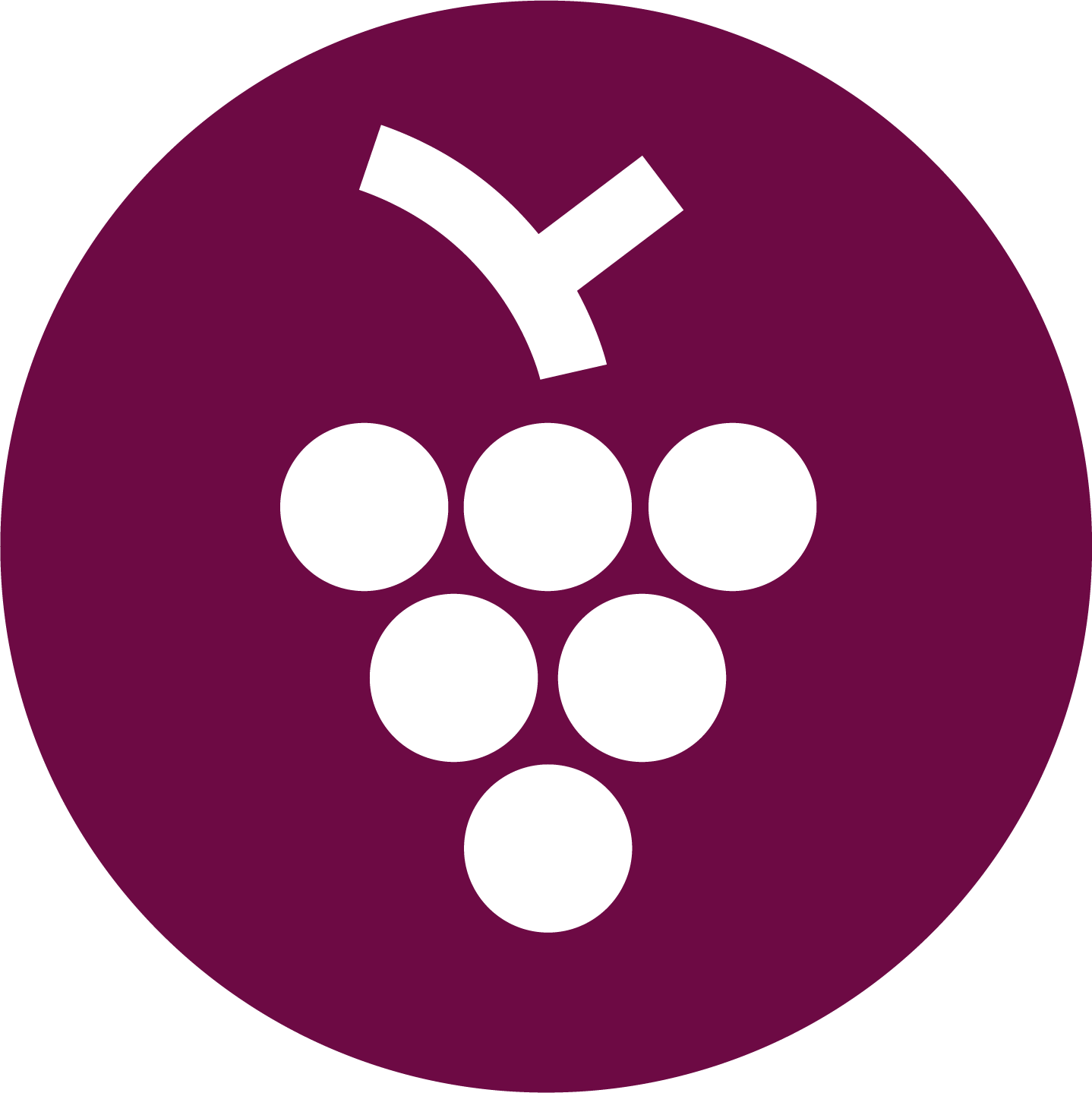
WINERIES TO VISIT
With designs on packing out every one of your days, densely planted La Rioja is constantly having to make space for new vineyard openings and the unfolding boundaries of heritage estates. There’s a lifetime of persuasive tasting adventures to be had in the area’s three sub-regions, and the only challenge is to map out an itinerary to do them justice. Here are some of our favorite places to stop and sample.
Bodega Lanzaga
Run by one of Spain’s greatest winemakers, Telmo Rodríguez, in the village of Lanciegos, this winery has revisited the past in order to unearth the wines of tomorrow. Rodríguez’s dream is to “make the best Rioja wine of the 18th-century,” with a terroir-focused approach that uses organically farmed old vines to create a field blend from estate vineyards.
Bodega Alegre Valgañón
All set for rustic Rioja? The unsung leaders of the revival that puts viticulture tradition first, husband-and-wife team Oscar Alegre and Eva Valgañón insist on developing small-batch wines with earthy tones in their home village of Fonzaleche. Maybe pack a sweater: it’s the highest vineyard in the region.
Artuke
Founded by brothers Arturo and Kike (hence the familial portmanteau), this 26-hectare plot in Baños de Ebro is primped and preened with glorious Tempranillo vines. Their success story is partly thanks to the winery’s association with Rioja’n’Roll, a gung-ho group of bright young winemakers not afraid to challenge the status quo.
Olivier Rivière Vinos
There’s a school of thought in La Rioja these days that if Telmo Rodríguez is involved then it’s probably a good idea to pay attention. It was Rodríguez who first lured owner Olivier Rivière from outside Perpignan to the region and his ambitious project builds on a Burgundy-style heritage. French-oak aged Gabaxo is the extraordinary result.
Sierra de Toloño
La Rioja-native Sandra Bravo might work with some of the highest altitude vineyards in the region, but her old vine Tempranillo blends reach even loftier plains. Factor in her resume as a former “Young Winemaker of the Year,” as well as vineyard mountain views as intense as her wine, and it’s small wonder everyone gets giddy about the place.
Bodega Lanzaga winery and vineyards in Lanciego
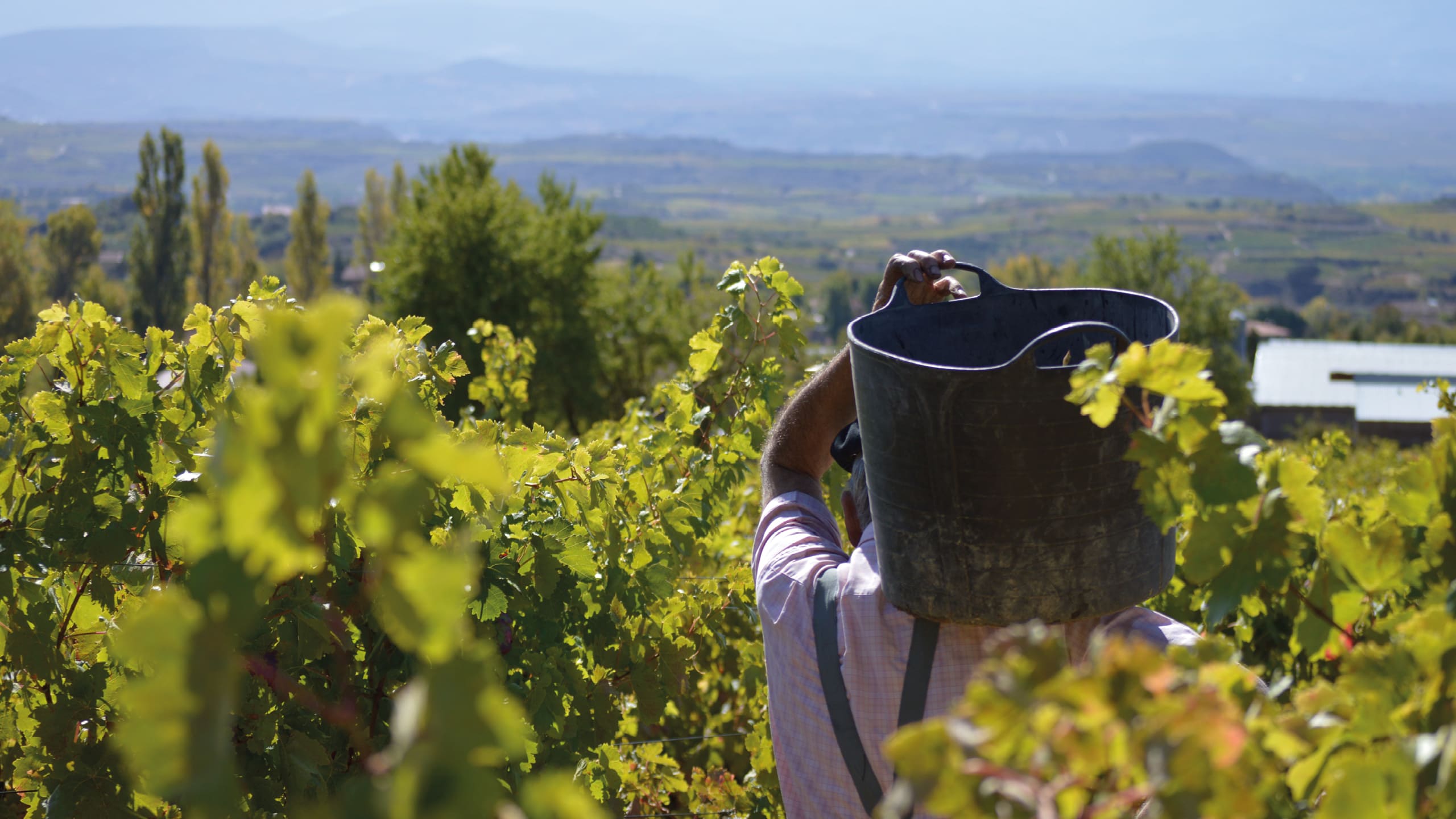
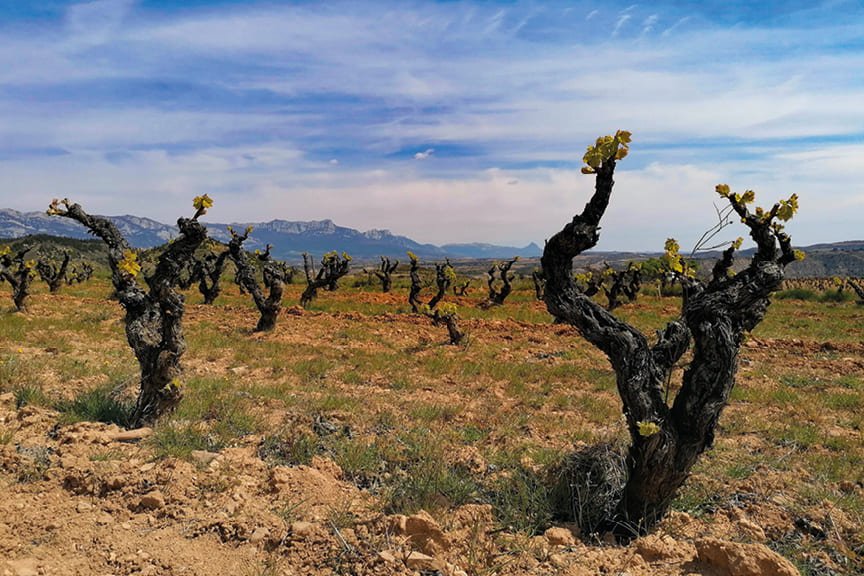
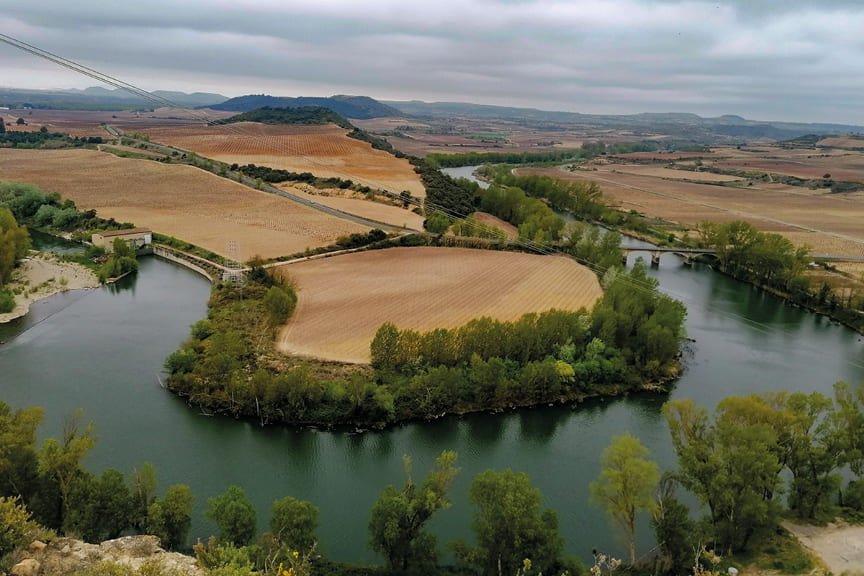
Artuke vineyards in Baños de Ebro

PLACES TO STAY
As much as La Rioja is about the vineyards, no visit is worth the wine alone without an overnight stay at some of Spain’s most sublime boutique hotels. The right places also specialize in guided tours and concierge recommendations, meaning the hard work is already done for you.
Hotel Viura
A contemporary bolthole with secret escape tunnels, in a sea of vineyards with wine tours, wine tastings and onsite wellness. Located in a tiny village with 43 doorstep wineries, this Villabuena de Álava hotel ticks all the boxes and is an absolute delight.
Hotel Marqués de Riscal
Here’s an idea: how about a titanium-ribboned design hotel with the fingerprints of architect Frank Gehry all over it, and a winery set against a backdrop of some of the biggest-name bodegas. Plug the town of Eltziego into your sat nav and you’re all set for La Rioja’s most memorable hotel.
Hotel Palacio Tondón
North of Haro, this swaggering 16th-century palace is a gateway to a life-affirming viticulture journey, with a restaurant terrace overlooking the Ebro, wine cellar and wine bar to wallow in. For a different sort of awakening, the Camino de Santiago trundles right by the front door.
Palacio de Samaniego
There are only nine rooms here and, while others promote modernity, this listed historical monument remains a tribute to the age-old stone, wood and ochre soil of the region. With no reception, it almost feels like a wine connoisseur’s private home.
Finca de los Arandinos
We all fantasize about a Xanadu-like winery, hotel, restaurant and spa combo, which is why this sleek, minimalist boutique is such a find. It’s all about relaxation, albeit wrapped up in sharp lines, glass and concrete that flick off La Rioja’s traditionally rustic aesthetic.
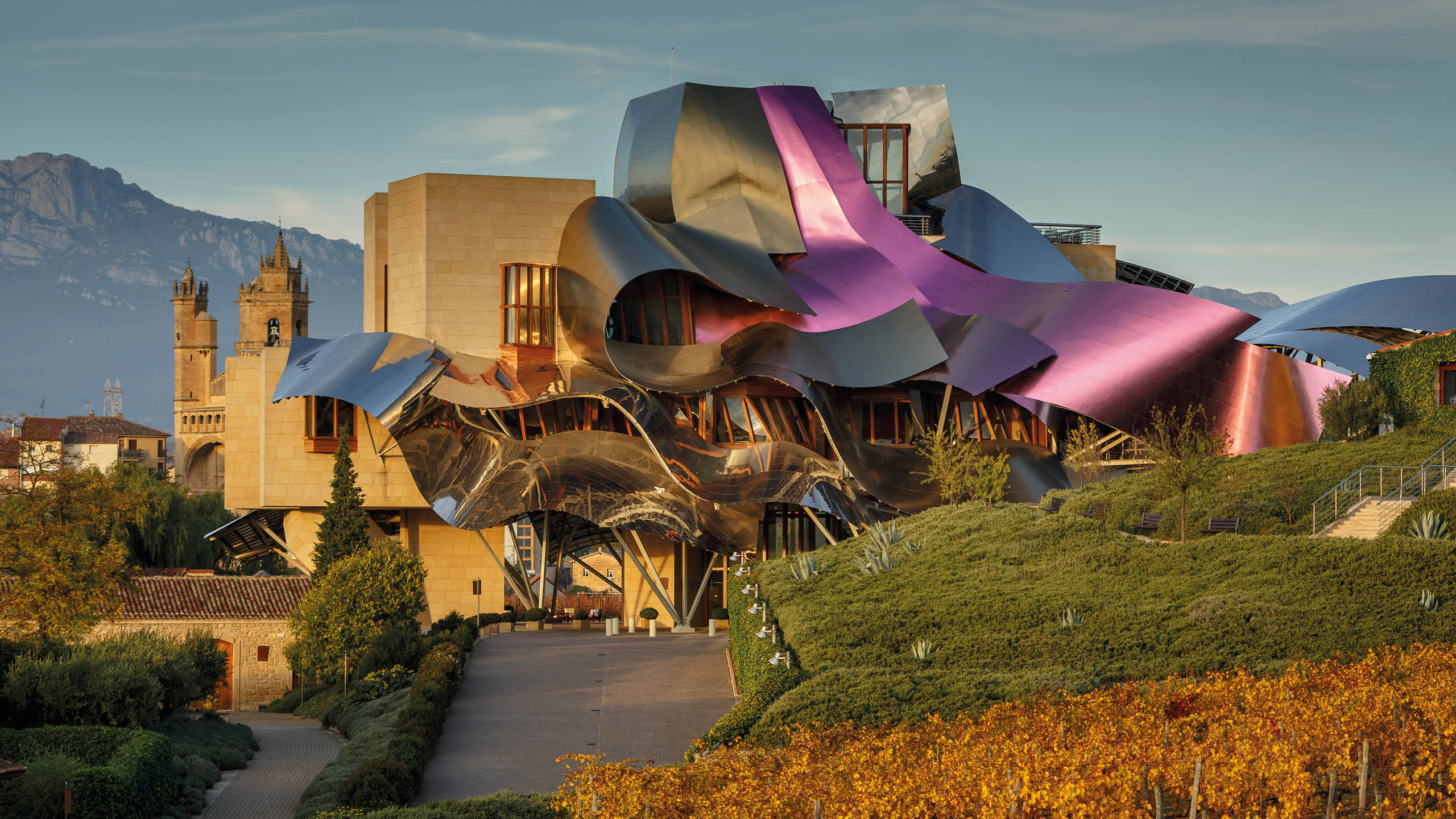
Frank Gehry’s Hotel Marqués de Riscal is Rioja’s most starry hotel and wine destination
Finca de los Arandinos is a sleek, minimalist boutique hotel that's a contrast to La Rioja’s traditionally rustic aesthetic
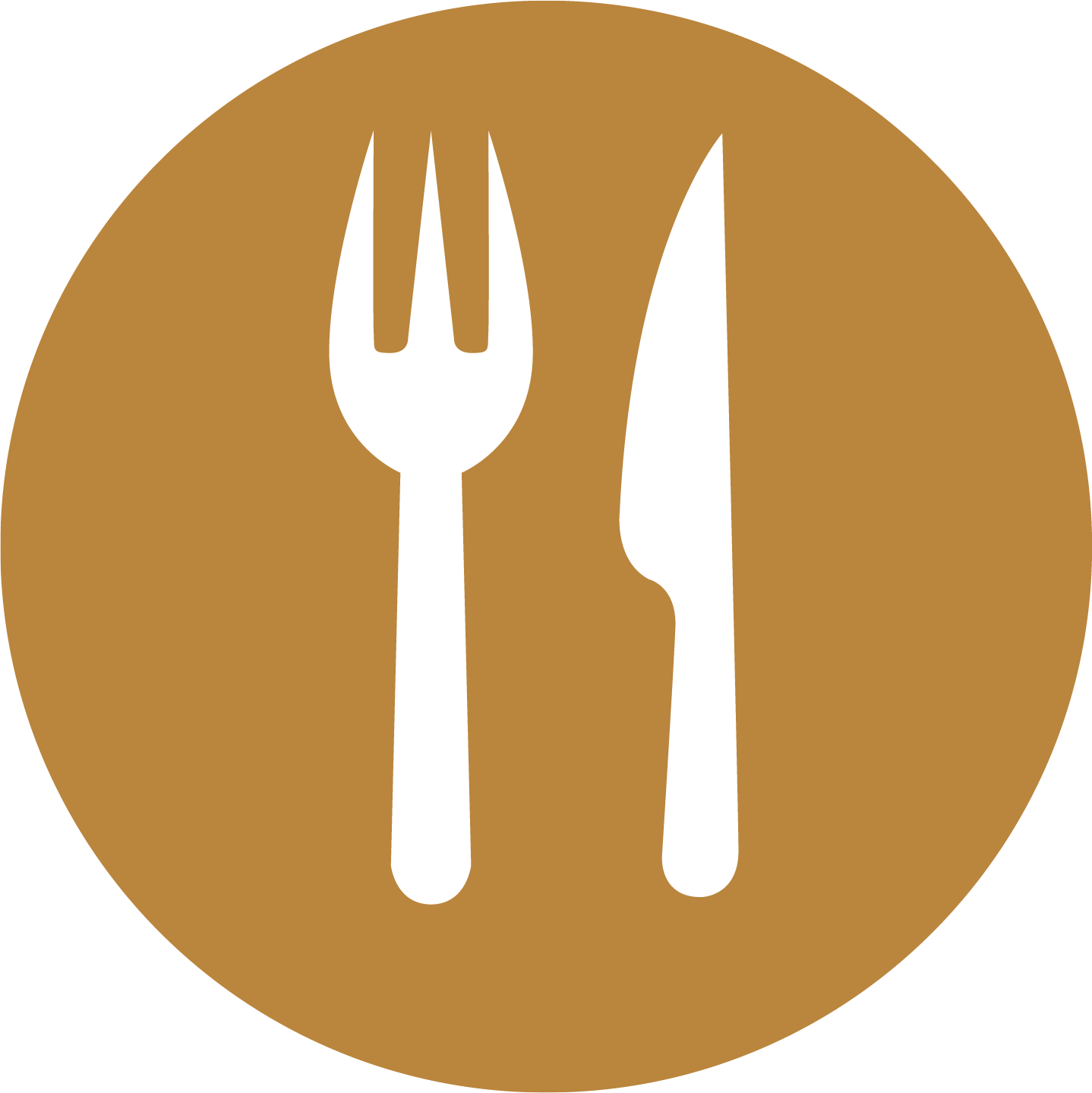
WHERE TO EAT
Eating well in Spain is a human right and it’s appropriate that sublime food and drink are combined at the region’s best hotels and destination wineries. Expect restaurants with their roots in the soil, plus hyperlocal ingredients and starry-eyed chefs that seem to have been born in the kitchen. Oh, and did we mention how good the wine is?
El Portal de Echaurren
Superlative alert: the first restaurant in La Rioja to be awarded a Michelin star – and now a second – this creative concept in the swoon-worthy Hotel Echaurren in Ezcaray is for cooking with fanfare; the offal-inspired menu includes dishes like tartar and squid toffee and sweetbread tempura ravioli.
Ikaro
Logroño has three Michelin-worthy tables: Kiro Sushi (Japanese), Ajonegro (Mexican meets Spanish) and this tour de force from a Basque-Ecuadorian couple. That translates into plates marrying the prawn buns and fritadas of the Amazon with the chorizos and gazpachos of the Spanish hinterland.
Eguren Ugarte
To the town of Laguardia for this destination winery and restaurant towering, literally, over 130-hectares of vines. History runs deep, as it’s one of Europe’s oldest family-run vineyards, while onsite Restaurante Martín Cendoya offers traditional Riojan staples. The highlight? A drinking well’s choice of more than 30 locally blended tipples.
Venta Moncalvillo
From blacksmith’s workshop to restaurant kitchen: that’s the unlikely backstory of chef Ignacio Echapresto, who now dazzles in the village of Daroca de Rioja with biodynamic menus based on roots, leaves, flowers and fruit. Keeping things in the family, brother Carlos is in charge of the cellar – keep on their good side and order the wine pairing.
Nublo
The town of Haro keeps some pretty sweet secrets: it’s home to one of the world’s largest concentrations of century-old wine cellars. Another is this fine-dining affair, which keeps a space in what was once a palatial medieval home. The reason you’re really here though, is for the wood-fired cuisine.
Ikaro Rioja’s marriage — anchovies and green pepper tartelette. The cocina at Nublo and a dish of Bonito al sarmiento y pimiento verde

THINGS TO DO, PLACES TO DISCOVER
What’s there to know about Rioja apart from its wine? Plenty, really. Top-notch sights abound and whether you seek a bit of history, hiking, art or road tripping while chasing the Spanish sun, there’s guaranteed to be something here for you.
Vivanco Museum of Wine Culture
This vast museum in the historic town of Briones has its own grapevine garden tangled with around 220 varieties. Come for the immersive archive of the region’s wine history, stay for the cherry-picked art collection headlined by Pablo Picasso and Andy Warhol.
Balcón de la Rioja
To understand La Rioja better – and before you lose track after too many tastings – a sense of the infinite can be eyed from the Balcón de la Rioja, a lofty natural panorama plotted almost at the center of the region’s winemaking map.
Parque Natural de Sierra Cebollera
Pick your time right to come to La Rioja during the September/October harvest and the beech and oak will have turned gold and the hiking trails will be as ripe to enjoy as the fruit. Hike a summit or two, then sprint back down for a celebratory bottle.
Monasteries of San Millán de la Cogolla
Skip the overcrowded Camino de Santiago, but don’t forget that it weaves east to west through the region. The perfect place to dip a toe onto the trail is at these two Unesco-worthy temples on the pilgrim route east of Logroño. A heavenly sort of peace is guaranteed.
La Batalla Del Vino
Like La Tomatina, the mass food brawl with tomatoes in Buñol near Valencia, this annual wine fight in Haro happens on Saint Peter’s Day (June 29). Grab a bucket – or better still, a water pistol – and prepare to get doused in liters of red wine. Don’t worry: there’s plenty of the stuff to go round.
Monasteries of San Millán de la Cogolla, and a typical La Rioja landscape, La Batalla del Vino, and Parque Natural de Sierra Cebollera

Vivanco Museum of Wine Culture
Photography ©VOICES, Helen Cathcart, all other images the establishments
We recommend
RIOJA REBORN
A band of forward-thinking winemakers is breathing new life into the Spanish wine industry, with grand plans to celebrate local terroir and excellency, as Brett Davis investigate
REBEL WITH A CAUSE
Winemaker extraordinaire Telmo Rodríguez has helped redefine Rioja with his unique terroir-focused village wines, as Nargess Bank discovers
WINE TRAILS OF THE VAL D’ORCIA AND MONTALCINO
Continuing our Italian road trip in Val d’Orcia and Montalcino, where we visit wineries, cuisines, and stay in places that express this unique part of Tuscany
DISCOVER THE INVENTIVE FOOD AND WINE SCENES IN EUROPE’S SECOND CITIES
European capitals can sometimes steal away from the second cities’ limelight, yet it’s often in these urban settings where the most inventive food and wine culture flourishes, reports William Hersey
